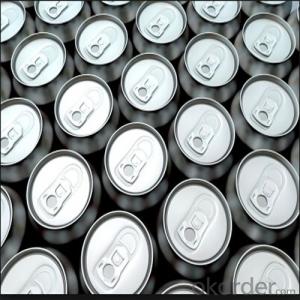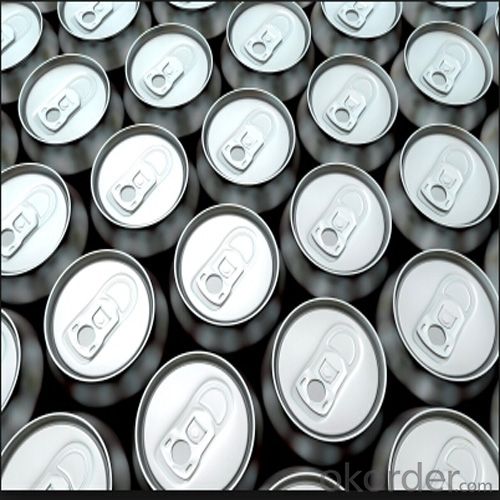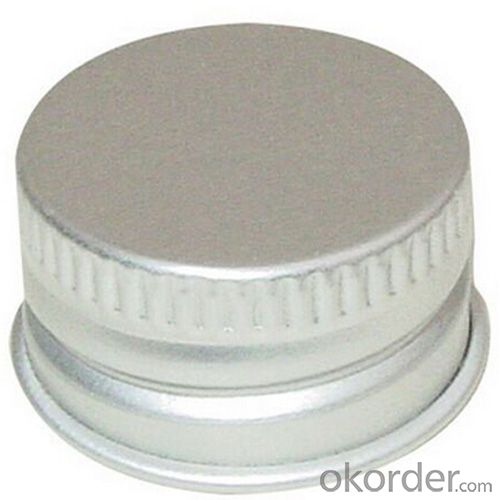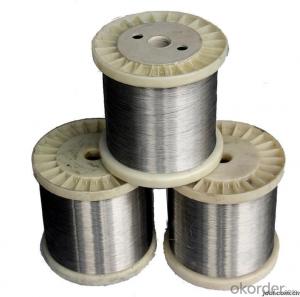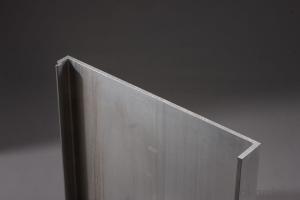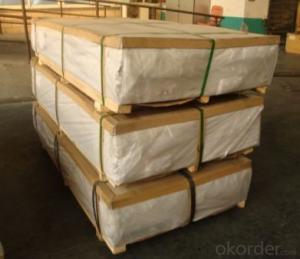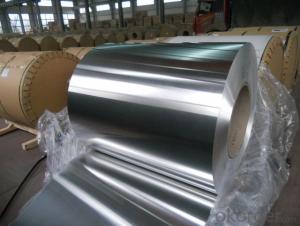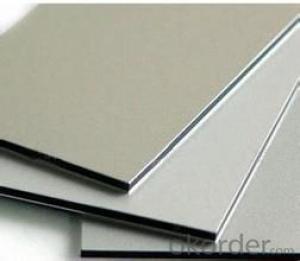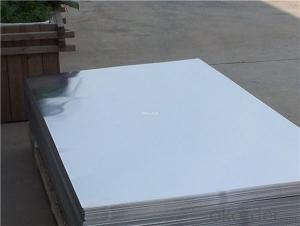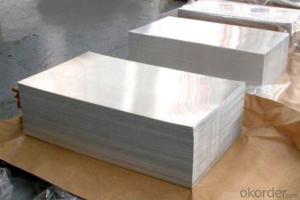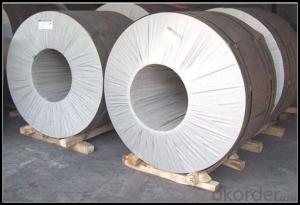8 1/2 X 11 Sheets Aluminum for Inkjet - Closure Aluminum Sheet for Bottle Caps AA1060
- Loading Port:
- Shanghai
- Payment Terms:
- TT OR LC
- Min Order Qty:
- 5 m.t.
- Supply Capability:
- 10000 m.t./month
OKorder Service Pledge
OKorder Financial Service
You Might Also Like
Specification
1.Structure of Closure Aluminum Sheet for Bottle Caps AA1060 Description:
Aluminum Sheet for bottle closure is rolled to very fine tolerances to yield more closure per tonne of stock and to allow uninterrupted operation of high-speed, multiple-cavity presses. Such closure sheet its strength, high formability, low Earring and printable surfaces make it ideal for pilfer-proof caps and vial seal
The broad categories of ROPP closures can be defined as Plain Printed Caps, Top Embossed Caps, Knurl Embossed Chamfered Caps, Side Embossed Chamfered Caps, Deep Drawn Caps, Extra Deep Drawn Side dry offset printed caps etc
2.Main Features of Closure Aluminum Sheet for Bottle Caps AA1060:
Reasonable and stable chemical composition
Accurate tolerance
Nice mechanical property
Standards: EN, ASTM and JIS
3. Closure Aluminum Sheet for Bottle Caps AA1060 Images:
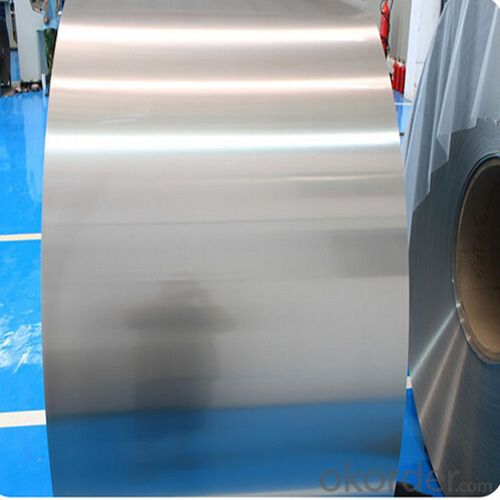
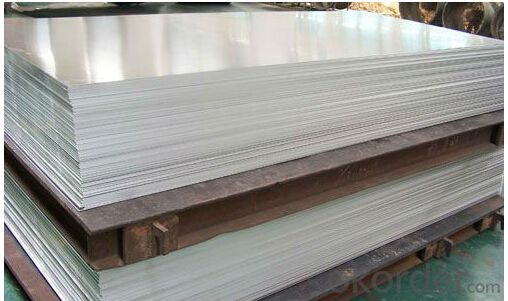
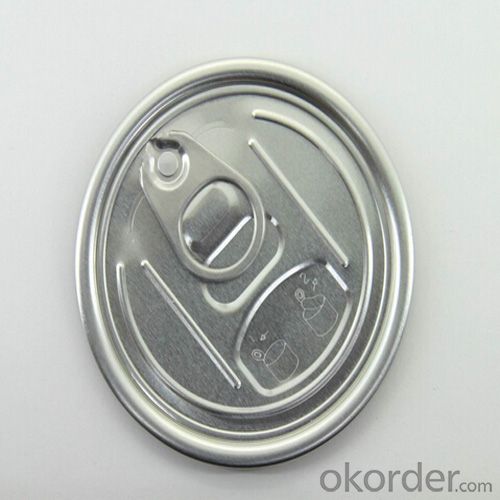
4. Bottle Cap Aluminium Sheet and Coil Specification:
| Product | Alloy | Temper | Specification | |
| Thickness (mm) | Width (mm) | |||
| Auminium sheet/plate/strip | 1,3,5,8 series | O, H1X, H2X | ≥0.1 | 800-1700 |
| Curtain wall | 1,3,5,8 series | H12, H22 H24, H26, O | 0.2-4.0 | 800-1700 |
| PS plate | 1050,1060, 1070 | H14, H18, H19 | 0.13-0.3 | 1000-1500 |
| Aluminum foil stock | 1,3,5,8 series | O, H1X, H2X | 0.2-0.5 | 800-1700 |
| Decorate material | 1,3 series | H12, H22 H24, H26 | 0.1-0.5 | 800-1650 |
| Lips cap stock | 1060, 8011 5052, 5182 | H16, H18 H19, H22 H24, H26 | 0.15-0.3 | 1700 |
| Aluminum composite panel | 1100, 3003, 8011 | H14, H16 H18, H26 | 0.2-0.35 | 1700 |
5.FAQ
1.Q: What about leadtime ?
A: Normally the leadtime is 60days after we receive the deposit and confirm the details. All the press machines we use is the best quality in China Yangli brand. The press machine leadtime from Yangli is 50days, the best leadtime we can give is 60days.
2.Q: What's the lead time for moulds?
A: Normally the mould leadtime is 45 days after we confirm all the details with customer. Our professional mechanical enginners from Austria will design the mould according to the samples from customer, or by the specifications offered by customers.
3.Q:What kinds of mould you can make? and what is your strong point for the moulds?
A: we can make wrinkle wall mould and smooth wall mould both. For wrinkle wall mould we can make, 79" pan, fish pan, bbq pan. For smooth wall mould we can make muffin cup, and cake cup, tar cup,etc. We can also make 2 or 3 portion conatiner moulds as long as you offer us sample or specifications. Our strong points are all our moulds are WEDMLS cut, which makes the mould more accurate and precise. Important materials likestainless steel parts we make in Austria. We also recut after heat treatment, which most of makers do not take this process..
- Q: This question asks for the method to determine the quantity of aluminum sheet required for a specific project.
- <p>To calculate the amount of aluminum sheet needed for a project, first determine the dimensions of the area to be covered. Measure the length and width to find the total area in square units. If the project involves complex shapes, break it down into simpler shapes like rectangles and circles, and calculate the area for each. Multiply the total area by the thickness of the aluminum sheet required. Finally, consider any additional material for overlaps or wastage, typically around 5-10%. The total volume calculated will give you the amount of aluminum sheet needed for the project.</p>
- Q: 1100 scope of application of aluminum plate
- 1100 aluminum plate is generally used in utensils, heat sink, caps, printing plates, building materials, heat exchanger components, but also can be used as deep stamping products. It is widely used in various fields ranging from cooking utensils to industrial equipment
- Q: Can aluminum sheets be used for automotive body panels?
- Certainly, automotive body panels can indeed utilize aluminum sheets. In reality, the automotive industry is progressively incorporating aluminum due to its lightweight attributes and remarkable strength-to-weight ratio. By employing aluminum sheets for body panels, the overall weight of the vehicle is diminished, thereby enhancing fuel efficiency and performance. Moreover, aluminum exhibits exceptional resistance to corrosion, rendering it an enduring selection for automotive purposes. The use of aluminum sheets for automotive body panels has gained considerable popularity, particularly in the manufacturing of electric vehicles, as their lightweight structure optimizes the vehicle's range.
- Q: To an idiot, this may seem like a stupid question: its just aluminum. But it may not be.However seeing that I am only a high school student and don't have access to aluminum power (which is what I desire for an independent experiment) so I'd like to grind consumer grade aluminum foil down bases of Mohs scale of Hardness.My concern is that aluminum foil is Aluminum oxide which is a 9 (10 being diamond, 1 being talcum powder) and this would be horribly difficult to grind.If it is Alumina, that's only a 3.5.If it does happen to be aluminum oxide, can you think of a way to remove the Oxygen. Would nitric acid work.
- Thermite or meth?
- Q: Can aluminum sheet be used for aircraft skin panels?
- Yes, aluminum sheet can indeed be used for aircraft skin panels.
- Q: Can aluminum sheets be used for food processing equipment?
- Yes, aluminum sheets can be used for food processing equipment. Aluminum is a popular choice in the food industry due to its numerous beneficial properties. It is lightweight, durable, corrosion-resistant, and has excellent thermal conductivity. These properties make aluminum sheets ideal for various applications in food processing equipment, such as mixing bowls, cooking utensils, baking trays, and food storage containers. Additionally, aluminum is non-toxic and does not react with food, ensuring the safety and quality of the processed products. However, it is important to note that aluminum should not come into direct contact with acidic or alkaline foods, as it may react and affect the taste or quality of the food. In such cases, a protective barrier or lining should be used. Overall, aluminum sheets are widely used in the food industry due to their versatility, durability, and food-safe characteristics.
- Q: How to solve the loose bonding of aluminum sheet and silica gel?
- you can use YH-840 to bond silica gel and aluminum sheet in small area, and it’s hard to tear and will have an effect of destruction and melting, transparent and environmental.
- Q: What are the different types of surface coatings for aluminum sheets?
- There are several types of surface coatings available for aluminum sheets, including anodizing, powder coating, painting, and laminating.
- Q: Can aluminum sheet be used in marine environments?
- Yes, aluminum sheet can be used in marine environments. Aluminum is highly resistant to corrosion and is commonly used in the construction of boats, ships, and other marine structures. It has excellent durability, lightweight properties, and can withstand exposure to saltwater and harsh weather conditions.
- Q: Can the aluminum sheets be used for manufacturing decorative trim?
- Indeed, the utilization of aluminum sheets is viable for the production of decorative trim. Being a versatile substance, aluminum is renowned for its lightweight nature, durability, and exceptional resistance to corrosion. It bestows the convenience of effortless shaping and molding into diverse decorative configurations and motifs. Furthermore, aluminum's aesthetic allure can be accentuated by applying coatings or paints of assorted hues. Consequently, aluminum sheets emerge as a highly favored option for fabricating decorative trim across a multitude of sectors, encompassing architecture, automotive, and interior design.
Send your message to us
8 1/2 X 11 Sheets Aluminum for Inkjet - Closure Aluminum Sheet for Bottle Caps AA1060
- Loading Port:
- Shanghai
- Payment Terms:
- TT OR LC
- Min Order Qty:
- 5 m.t.
- Supply Capability:
- 10000 m.t./month
OKorder Service Pledge
OKorder Financial Service
Similar products
Hot products
Hot Searches
Related keywords
